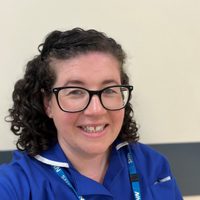Before you watch this webinar
Enhancing your learning experience begins with understanding you better. Collecting data enables us to tailor our educational content specifically for our audience. Discover more about how we handle your information in our Privacy Policy.
Event
When is Parkinson's not Parkinson's - differential diagnosis
Our sponsor

Parkinson's Academy webinar
When is Parkinson’s not Parkinson’s. Join the discussion and increase your knowledge on how to differentiate between the complex conditions that present like Parkinson’s but aren’t. What are the observations and in clinic tests that can be done? What signs and symptoms should you look for? How can scans help you make the diagnosis and how to ‘read’ them? All theses questions and more will be answered by our expert speakers.
CPD Accreditation
'When is Parkinson's not Parkinson's - differential diagnosis' has been approved by the Federation of the Royal Colleges of Physicians of the United Kingdom for 1 category 1 (external) CPD credit(s). Full conditions of approval are listed in our guidelines.
Please note: CPD does not include satellite symposia sessions.
Prof Nicola Pavese - presentation slides
Prof Annette Hand - presentation slides
Kelley Storey - presentation slides
Summary
Various conditions can present like Parkinson’s disease (PD), making avoiding misdiagnosis an important challenge.
The NICE guidelines in PD in adults state that people with tremor, stiffness, slowness, balance problems and/or gait disorders should be referred “quickly and untreated” to an expert in the differential diagnoses. This expert should then clinically diagnose, based on Brain Bank criteria, and review this diagnosis for atypical Parkinsonism every six to 12 months, Professor Annette Hand explained.[1]
There are three main types of atypical Parkinsonism, which are sometimes referred to as Parkinson’s Plus. They are multiple system atrophy (MSA), progressive supranuclear palsy (PSP), and corticobasal degeneration (CBD), and all have a life expectancy of up to 10 years.
People with these conditions tend to present with symptoms that look like PD but progress more rapidly. They will often respond poorly to treatment, particularly levodopa, and have additional red flag symptoms.
“It is really important that we diagnose people from the very beginning of their journey and that we think about our confidence in that diagnosis,” said Annette.
“When we first see someone who looks like they have PD, we can’t say that it definitely is. We need to see how they progress and change over time, and how they respond to treatment.”
In MSA, the additional symptoms may include early bladder issues, postural hypotension, sexual dysfunction, cold extremities, and difficulty speaking or swallowing. Patients may also experience stridor or find it challenging to control their emotions.
Red flags for PSP include falls, postural instability, restricted eye movements, slow or slurred speech, and difficulty speaking or swallowing. Cognitive changes and impulsive behaviour may also be present.
The additional signs and symptoms of CBD can include a highly asymmetric presentation, apraxia, dystonia, myoclonus, alien limb, and slurred or distorted speech, as well as cognitive and behaviour changes.
Diagnostic tests
Professor Nicola Pavese said that while imaging can be useful, there was not a yet a perfect biomarker for atypical PD.
On 18F-DOPA PET or SPECT, an indication of reduced dopamine function can be indicative of PD, MSA, PSP, CBD, or dementia with Lewy bodies. “It can be very useful to differentiate Parkinsonisms from other conditions, but it is not that useful to differentiate Parkinson’s from atypical Parkinsonism,” he said.
18F-FDG PET, which enables the viewing of glucose metabolism, can be useful, he went on. He explained that lentiform nucleus glucose metabolism was preserved or raised in idiopathic PD, yet reduced in most atypical cases.
“This is useful but…the utility is quite reduced at the moment. You need expert centres to do this and more standardised parameters,” Nicola added.
However, there is “hope for the future”, he went on. “We know that these conditions have different pathologies. For example, we know that MSA, PD, and dementia with Lewy bodies are synucleinopathies, so there in an accumulation of misfolded α-synuclein protein in the neurons. In SPA and CBD, it is the tau protein that is misfolded, and causes neuron damage.”
There is now some evidence to suggest that a new tracer, 18F-PI-2620, is able to bind to α-synuclein protein in the cerebellar of people with MSA, but not in those with PD or PSP, he added.
Moving on to discuss MRI, he said scans were usually normal in both early PD and early MSA. Red flags, or features that could suggest atypical Parkinson’s disorders, include putaminal atrophy, putaminal hypointensity, and putaminal slit sign. However, some of these features are quite common is elderly PD patients, so they should be cross-referenced with clinical features.
Atrophy of the pons, or cerebellum, particularly alongside dilation of the IV ventricle, can be indicative of MSA. Atrophy of the midbrain may suggest PSP.
“With the current techniques, we cannot make a diagnosis, because the scans might be completely normal. There are a lot of promising tools (in development)… but a lot of research is needed before they become available in clinical settings,” concluded Nicola.
MDT approach
PD nurse specialist, Kelly Storey, said an MDT approach was vital at diagnosis, during disease progression, and through to the advanced stage of disease and end of life care.
“You might already know the patient and their family when they say their symptoms have progressed, they are having new problem, or the medications aren’t working. You may think the diagnosis may have changed, but the patient may be very new to atypical diagnoses,” she said.
“There are lots of other health professionals who can be involved. We can't be all be the experts, and it is important to know who to refer on to, where they are, and how to find them.”
At Kelly’s Newcastle centre, the team runs atypical Parkinsonism MDT clinics for more than 150 patients every three months. It includes movement disorder neurologists, PD clinical nurse specialists (CNS), a neuro physiotherapist, speech and language specialists, palliative care consultants and CNS, and an MSA nurse.
The regional service supports patients and families through new / changed existing diagnosis of atypical Parkinsonism. Patients can book to see the physio, palliative care, or speech and language therapists either face-to-face or over the phone.
The team will also share signposting information on topics including research trials, local charities, support groups, and hospices, as well as advice on logistical issues, such as driving. Summaries of the discussions are shared with the person’s PD nurse and GP.
“We need to understand that every patient deserves expert care, and they have to be referred on to the appropriate health care professionals to help. Every patient has their own set of problems, and it's really important to personalise their care,” said Kelly.
Our Parkinson's Disease webinars are available on SoundCloud:
soundcloud.com/neurologyacademy
Our sponsor

Speakers
 Prof Annette Hand
Prof Annette HandProfessor of nursing – clinical academic, Northumbria University
 Prof Nicola Pavese
Prof Nicola PaveseProfessor of clinical neuroscience, The Newcastle upon Tyne Hospitals NHS Foundation Trust
 Kelley Storey
Kelley StoreyClinical Nurse Specialist in Parkinsons Disease, Newcastle upon Tyne Hospitals NHS Foundation Trust
'The things you can't get from the books'
Parkinson's Academy, our original and longest running Academy, houses 23 years of inspirational projects, resources, and evidence for improving outcomes for people with Parkinson's. The Academy has a truly collegiate feel and prides itself on delivering 'the things you can't get from books' - a practical learning model which inspires all Neurology Academy courses.